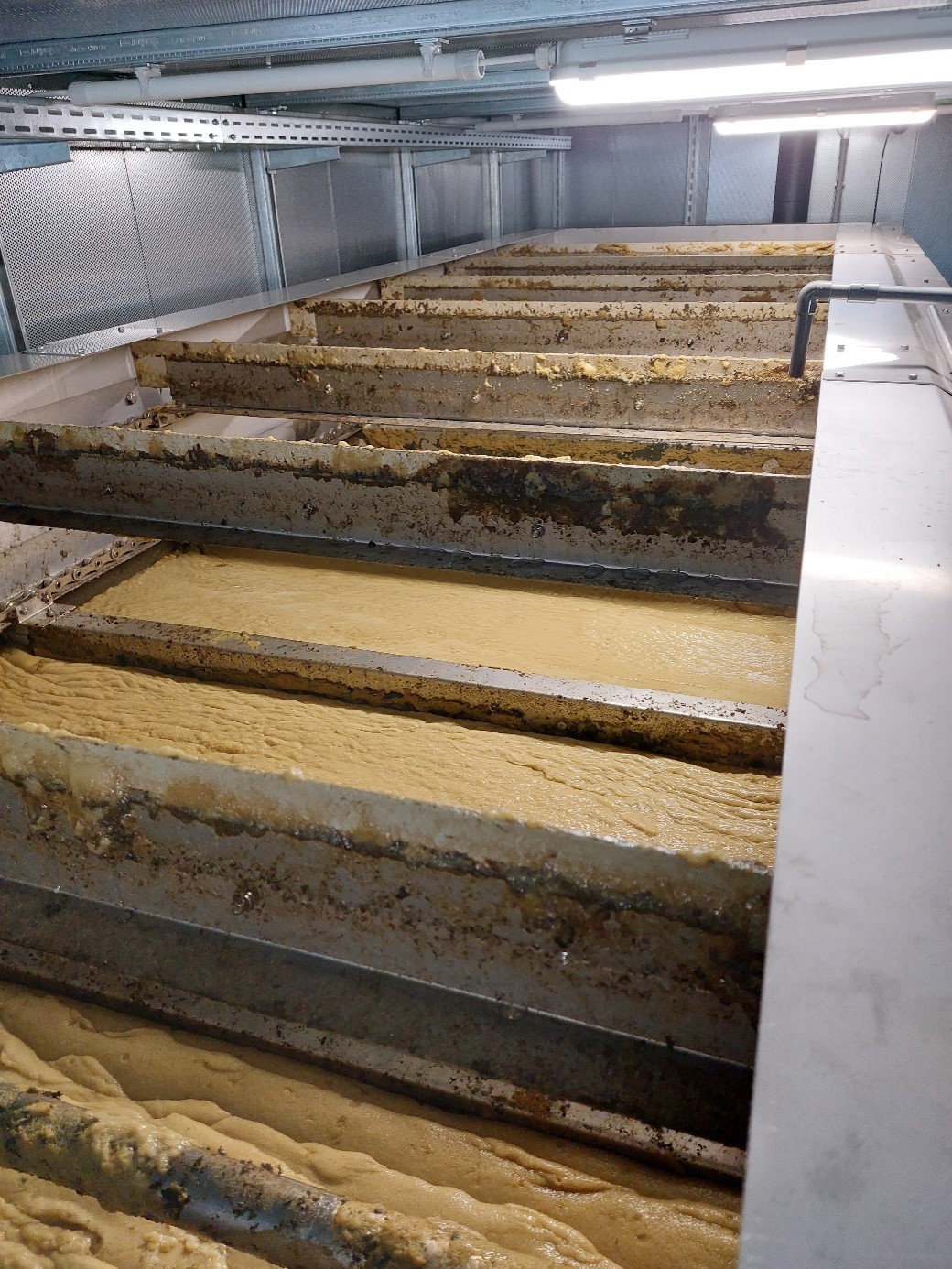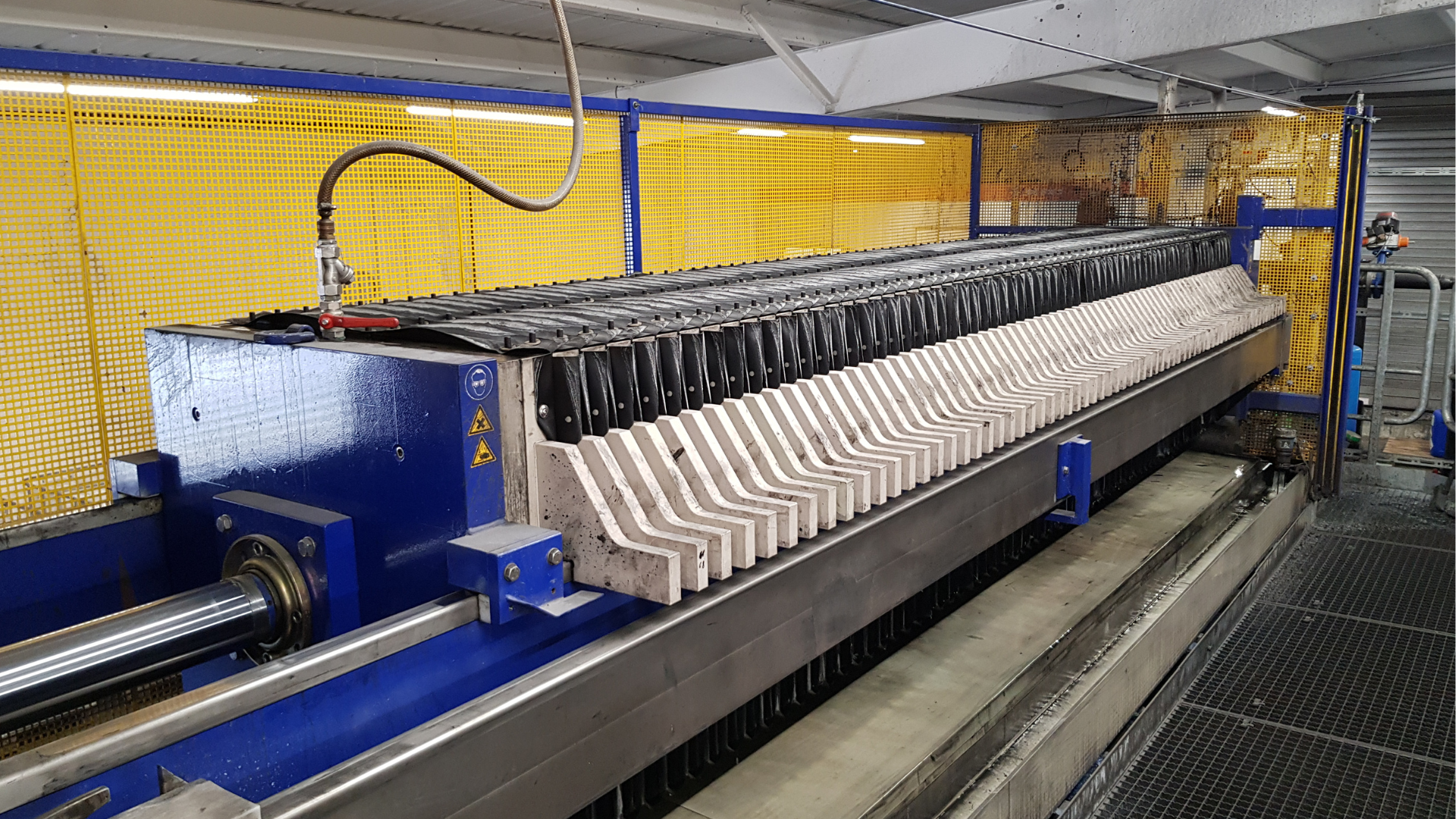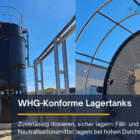The sludge volume refers to the total volume of sludge produced in a water or wastewater treatment process. It is made up of the volume of solids and the volume of enclosed water. The sludge volume is a decisive factor in the planning and operation of wastewater treatment plants and industrial water treatment plants, as it has a significant influence on the dimensioning of the treatment plants, the efficiency of the dewatering processes and the disposal costs.
Table of contents
Importance of sludge volume in water and wastewater technology
Dimensioning of systems:
- The sludge volume is an important basis for the design of plant components such as sedimentation tanks, thickeners, dewatering systems and digestion towers.
Operational optimization:
- Regular monitoring of the sludge volume enables the control of processes such as precipitation, flocculation and sludge recirculation.
Disposal and transportation:
- A high sludge volume increases transportation and disposal costs. Reducing the volume is therefore a key objective of sludge treatment.
Sustainability:
- Minimizing the volume of sludge helps to conserve resources by reducing the amount of disposal space and chemicals required.
Measurement of the sludge volume
Sludge Volume Index (SVI)
The sludge volume index (SVI) is a standardized parameter that describes the volume of a sludge after 30 minutes of sedimentation in a 1-litre cylinder. The SVI indicates the ratio of the volume of the settled sludge to the dry matter (DM) and is given in mL/g DM.
Interpretation:
- Niedriger SVI (< 100 mL/g):
- Sludge is easy to sediment and compact.
- High SVI (> 150 mL/g):
- Sludge has poor sedimentation properties and tends to form threads or float.
- Niedriger SVI (< 100 mL/g):
Direct volume measurement
- Sedimentation tests:
- Measurement of the volume of settled sludge after a defined time in sedimentation tanks.
- Online sensors:
- Modern systems use ultrasonic sensors or optical measuring systems to continuously monitor the sludge volume.
Further parameters
- Solids content (TS):
- Indicates the proportion of dry matter in the sludge.
- Water content:
- The proportion of water in the sludge directly influences the total volume and the dewatering properties.
Factors influencing the sludge volume
The sludge volume is influenced by a variety of factors that depend on both the composition of the raw water and the treatment processes used:
Composition of the raw water
- Organic load:
- High concentrations of organic substances (e.g. in the food or chemical industry) lead to an increased volume of sludge.
- Inorganic substances:
- Mineral particles such as sand or metals increase the density, but can reduce the volume of the sludge.
Treatment procedure
- Precipitation and flocculation:
- The dosing of chemicals such as iron or aluminum salts to precipitate phosphates or heavy metals increases the sludge volume through the formation of precipitation products.
- Biological processes:
- The amount of activated sludge depends on the organic load and the activity of the microorganisms.
- Dewatering and drying:
- Efficient dewatering processes significantly reduce the volume by minimizing the water content.
Operating conditions
- Hydraulic load:
- High inflow rates can impair the sedimentation properties and increase the sludge volume.
- pH value and temperature:
- Extreme values can influence floc formation or biological activity and thus change the volume.

Photo: Sludge thickening using our ALMA NeoDAF flotation plant
Process for reducing the sludge volume
Reducing the volume of sludge is a key objective in sludge treatment in order to reduce costs and facilitate further processing. The most important measures are
1. thickening
- Objective: Reduction of the water content by sedimentation, flotation or centrifugation.
- Result: Reduction of the volume before further treatment.
2. stabilization
- Objective: Biological or chemical decomposition of organic substances to prevent putrefaction processes and reduce the volume.
- Procedure:
- Anaerobic stabilization in digesters.
- Aerobic stabilization through ventilation.
3. drainage
- Objective: Maximum water removal, e.g. using belt filter presses, chamber filter presses or centrifuges.
- Result: Increase of the dry matter content to 20-40 %.
4. drying
- Objective: Further volume reduction through thermal processes.
- Procedure:
- Solar drying.
- Fluidized bed dryer.
5. recovery of recyclable materials
- Processes such as struvite precipitation or thermal hydrolysis can recover valuable resources from the sludge and reduce the volume at the same time.

Photo: Our ALMA CFP chamber filter press for dewatering precipitation sludge from CP systems
Significance of the sludge volume in practice
System design and operation:
- A precise understanding of the sludge volume is crucial for the dimensioning of thickeners, dewatering systems and storage facilities.
Cost optimization:
- A reduced sludge volume significantly lowers transportation and disposal costs.
Sustainability:
- Optimized processes for volume reduction can minimize the use of chemicals and energy, which makes an important contribution to sustainability.
Conclusion
Sludge volume is a key parameter in water and wastewater treatment that influences all aspects of sludge treatment, from plant dimensioning to disposal. Careful measurement and control of the volume as well as the targeted use of volume reduction processes are crucial in order to reduce operating costs and meet legal requirements. At the same time, the reduction of sludge volume through innovative technologies such as resource recovery offers potential for more sustainable and efficient wastewater treatment.
For further information on our products, please feel free to contact us at any time!








